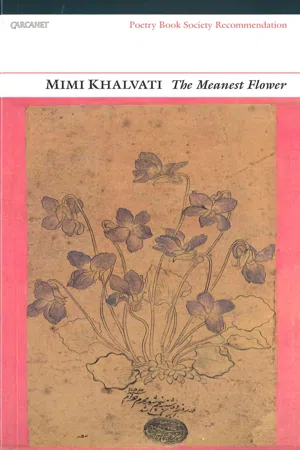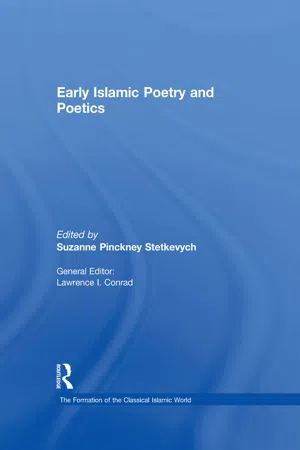Ghazal
A ghazal is a poetic form with origins in Arabic poetry that has been widely used in Persian, Urdu, and other languages. It typically consists of rhyming couplets and a refrain, with each couplet functioning as a separate poem. Ghazals often explore themes of love, loss, and longing, and are known for their intricate rhyme schemes and emotional depth.
5 Key excerpts on "Ghazal"
- eBook - ePub
- John Timpane, Maureen Watts(Authors)
- 2011(Publication Date)
- For Dummies(Publisher)
...When you feel comfortable in a form, explore new avenues with it yourself. Ghazals The Ghazal (pronounce it “guzzle” with a slight gargle on the g) is one of the few Arabic verse forms to have a big impact in the West. It came into European poetry through 19th-century German poets and got into English-language poetry in the late 1960s. Here are the rules: Every line must have the same number of syllables. American and English writers usually settle on iambic pentameter or something close, but you can choose any number of syllables you like. The Ghazal is a series of couplets (at least five, but there’s no upper limit). The first couplet rhymes. For example: October: the horizon, grey and wide, Is staggering — you’re dancing in the tide. The closing words of the second half of the second line are repeated in the second line of each succeeding couplet. It could be the last word, or a several-word phrase — it’s up to you. This is called the radif. Here, our radif is “dancing in the tide,” which has to appear at the end of the second line of each succeeding couplet. The remaining couplets don’t have to rhyme, and they can shift around in subject and tone. Make them as independent as you want, but always, come back to that radif (“dancing in the tide”). The makhta, or the poet’s signature (first name, last name, or both) appears somewhere in the last couplet. Here’s an example of a Ghazal we wrote ourselves, following all of these rules: October: the horizon, grey and wide, Is staggering — you’re dancing in the tide. My uncle died and left me twenty sheep Stacked in my basement. Dancing in the tide Of debts, divorce announcements, and debris, I chuck it all, go dancing. In the Tide There was a lottery coupon, and I won. Now all my friends come dancing in the tide. As ocarina orchestras obfusc, Maureen Watts goes dancing in the tide. Poets love the Ghazal because it’s both free and patterned. It’s halfway between a traditional, rhymed form and a free, associative one...
- eBook - ePub
- Mimi Khalvati(Author)
- 2011(Publication Date)
- Carcanet Poetry(Publisher)
...In Persia, the secular Ghazal reached its apotheosis in the work of Sa’adi, the mystical in Rumi and the two streams culminated in the poetry of Hafez. The traditional Ghazal addresses the unattainable beloved (often in the guise of a young boy or with an ambiguity due to epicene pronouns) and does so from a subservient, submissive position (which obviously poses problems for the contemporary woman poet). This poem attempts an imitation of one of Hafez’ most famous Ghazals, borrowing his radif and staying close to his conceits, but straying from the original metaphors. The last couplet of a Ghazal is known as the ‘signature couplet’ (maqta), in which the poet will claim authorship either by signing his/her name or by using a pseudonym or play on words. If the Ghazal represents the world, then the maqta is the poet’s place in it. Ghazal: To Hold Me Rodolfo: Mimi’s poet-lover in Giacomo Puccini’s La Bohème. Ghazal: Of Ghazals Quotation taken from Agha Shahid Ali’s Ghazal ‘Of Water’ in his last book, Call Me Ishmael Tonight (W.W. Norton 2003). Shahid died in 2001 and is much mourned by the many American poets whom he introduced to the canonical Ghazal and published in his anthology Ravishing Disunities: Real Ghazals in English (Wesleyan University Press 2000). A ‘real Ghazal’ he defined as one that observed the strict requirements of the form. While translating the Urdu Ghazals of Faiz, he also asked himself if he ‘could make English behave outside its aesthetic habits’...
- eBook - ePub
- A.J Arberry(Author)
- 2004(Publication Date)
- Routledge(Publisher)
...mankind.’” The origin of the art-form chosen by to be his particular medium is wrapped in the obscurity of age; it remains a fascinating problem for the researcher to discover what exact process of evolution led ultimately to the perfect type familiar to us in his poems. One theory points to the “erotic prelude” (rtaslb) which forms a constituent part of the characteristic ode of ancient Arabia, and suggests that in time this element was isolated into an independent unit, thus creating the Alternatively it is argued that the Ghazal is descended from some kind of lyrical poetry current in the courts of pre-Islamic Persia; but as no specimen of any such verse has been preserved this conjecture, attractive as it is, cannot command unconditional consent. What seems tolerably certain is that this form of poetry was always associated with music, that in fact it was designed to be sung; and it is natural to suppose that this very circumstance to a great extent determined the shape of the verses. It would be dangerous to place too much reliance on the references in classical Persian poetry to the sung poem at the palace of the old Persian kings, such for instance as the well-known passage in the Khusrau u Shirin of where B a rbad is credited with composing to thirty varieties of melody whose names are given; but it would be equally dangerous to dismiss these references entirely as pure fiction. Perhaps we have in fact to deal here with multiple origins ; the Persian Ghazal may be a product of that cross-fertilization of Iranian genius by the imported culture of Arabia which produced so many remarkable manifestations of the human spirit. Whatever the truth of this matter may be, we are on solid ground when we examine the Arabic lyrics of the ‘Abb a sid age and declare that these are the models used, and improved upon, by the later Persian poets...
- eBook - ePub
- Suzanne Pinckney Stetkevych, Suzanne Pinckney Stetkevych(Authors)
- 2017(Publication Date)
- Routledge(Publisher)
...8 TIME AND REALITY IN NASĪB AND Ghazal Renate Jacobi The appearance of the Ghazal, i.e. love-poetry as an independent thematic unit apart from the nasīb, the amatory prelude of the qaṣīda, is one of the few revolutionary developments generally conceded to Arabic literary history. 1 Although some research has been done on the genre, a considerable number of problems remains to be solved. Whether the Ghazal originated exclusively from the nasīb, or whether other poetic models must be taken into account, is still open to discussion, and there is also difference of opinion as to the dominant external factors promoting its development and giving rise to the new concept of love inherent in it. Is it primarily religion, monotheism and/or Qurʾānic ethics, as has been emphasized by Muslim scholars in particular? Or does it seem more plausible to consider economic and social conditions, the disintegration of bedouin society, leisure and luxury in the pilgrim towns, want and poverty among tribes of the Hijaz in a nomadic or semi-nomadic condition? This leads us to the question of how to differentiate between the urban Ghazal of ʿUmar ibn Abī Rabīʿa (d. about 93/712) and the so-called ʿUdhrī Ghazal of Jamīl (d. about 82/701) and other elegists. Form and content of the new genre, its motifs and techniques are not sufficiently studied either. The poets of the 7th century introduced new themes and concepts, but they also made use of conventions, sometimes subtly changing their meaning or employing them in unusual combinations. As a result, we observe a curious synthesis of tradition and innovation that has not been adequately described until today. Some of these questions could be answered with more precision...
- Basole, Anjum Altaf(Authors)
- 2021(Publication Date)
- Roli Books(Publisher)
...Readers would benefit by referring to it for literary interpretations of the couplets included in our selection. The late Professor Ralph Russell’s work on Ghalib, the Ghazal, and Urdu literature in general is invaluable for the interested reader and his translations of selected couplets of Ghalib add much to their understanding. We have benefited much from interaction with Professor Moazzam Siddiqui and one of us (AA) had the good fortune of taking from him a course on the history of the Urdu Ghazal. Professors C.M. Naim and Harbans Mukhia have been exceedingly kind and encouraging mentors. We would like to thank Hasan Abbas for assistance in collating the manuscript, Vinay Jain for advice on the Devanagari transliteration, Bilal Zahoor at Folio Books for excellent editorial input and Angela Ali for the portrait of Ghalib that marks the section for notes. Note 1. http://www.columbia.edu/itc/mealac/pritchett/00ghalib/ Introduction This is a book that invites you to think with Ghalib. It is about what makes Ghalib relevant to young South Asians who are growing up at a time when the subcontinent’s multi-cultural, multi-religious civilization is threatened by so many forces from so many sides. In the popular imagination Mirza Asadullah Khan ‘Ghalib’ 1 (1797–1869) is a romantic poet, a poet of love, longing, and desire from a different, aristocratic age of the nineteenth century. In his poetry, however, Ghalib talks not only about love and longing, but also about faith and religion, about respect towards those unlike ourselves, about the nature of divinity, about being and nothingness, about the importance of thinking for oneself, about what it means to believe, and ultimately, about what it means to be human. Ghalib’s questioning nature comes through very clearly in his verses. Not content to accept any received truths either from the Shaykh or the Brahmin, Ghalib constantly puts everything to the test of his own reason and experience...




